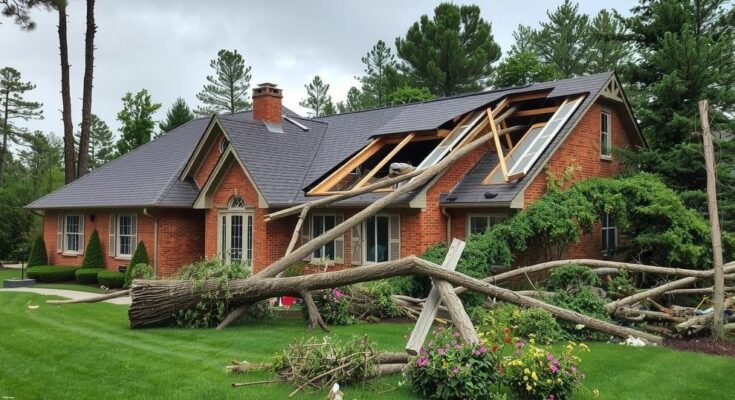Hurricane Helene was a catastrophic event in September, causing significant flooding across five states, resulting in 241 reported deaths. It impacted Florida severely, with severe storm surges, before moving to Georgia, South Carolina, North Carolina, and Tennessee, where it caused extensive destruction and loss of life. Recovery is ongoing as communities confront the aftermath of the destruction, marking Helene as one of the deadliest storms in recent US history.
Hurricane Helene emerged as one of the most devastating storms in recent history, leaving a catastrophic trail of destruction across five states in the Southeastern United States. Making landfall in Florida as a Category 4 hurricane, it subsequently traversed Georgia, South Carolina, North Carolina, and Tennessee, causing joint devastation characterized by flooding and significant wind damage. According to official reports, Helene resulted in 241 confirmed fatalities and substantial damage to infrastructure, homes, and agricultural resources throughout the impacted areas.
In Florida, Helene struck the rural Big Bend region, triggering a storm surge that devastated coastal communities. The hurricane produced wind gusts up to 99 mph and caused extensive flooding, marking it as one of the deadliest hurricanes to impact the state. As the storm moved northward into Georgia, it disrupted the lives of thousands, knocking down trees and power lines, with severe impacts reported in Augusta, where 90% of homes lost power.
South Carolina experienced further turmoil, with tornadoes and historic flooding occurring concurrently. The storm spurred 21 tornadoes, with peak gusts estimated at 100 mph, affecting power for over 1.4 million customers and leading to 49 reported deaths. Simultaneously, North Carolina faced unrelenting rain, resulting in record crests for rivers and catastrophic landslides, claiming the lives of multiple residents, including a family who had fled war in Ukraine.
Tennessee experienced substantial flooding as a result of Helene, breaking 100-year-old records along the Nolichucky River, where swift waters inundated areas and trapped individuals in perilous situations. Casualties included employees at Impact Plastics who were caught in the flood as it rapidly rose. As recovery efforts continue, many roads remain closed, and communities face a long and challenging road ahead.
In summary, Hurricane Helene’s magnitude and trajectory resulted in profound and irreversible losses across several states, accentuating the need for robust disaster preparedness and recovery measures in vulnerable regions. Helene’s aftermath will be remembered not only for the physical destruction but also for the emotional scars left on the communities it impacted.
Hurricane Helene formed in September and progressed from the Gulf of Mexico, impacting the Southeastern United States with severe flooding and high winds. The storm garnered attention from meteorologists and local residents, including naturalists like Tal Galton, who recognized the area’s vulnerabilities to flooding. Previous hurricanes had already marked these areas, making forecasters and local populations acutely aware of the potential for disaster. Helene’s path of destruction prompted emergency responses and national coverage, emphasizing the long-term impacts of such natural disasters on community infrastructures and economies.
Hurricane Helene stands as a stark reminder of the destructive power of natural disasters. Its devastating path through Florida, Georgia, South Carolina, North Carolina, and Tennessee has left a lasting impact manifested in loss of life and widespread infrastructural damage. The journey toward recovery is arduous as communities grapple with both physical rebuilding and emotional healing. The collective experiences of those affected highlight the urgent necessity for future preparedness and resilient recovery strategies.
Original Source: www.usatoday.com




